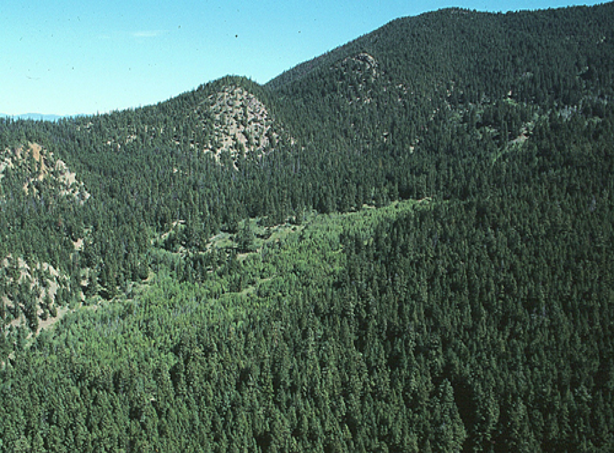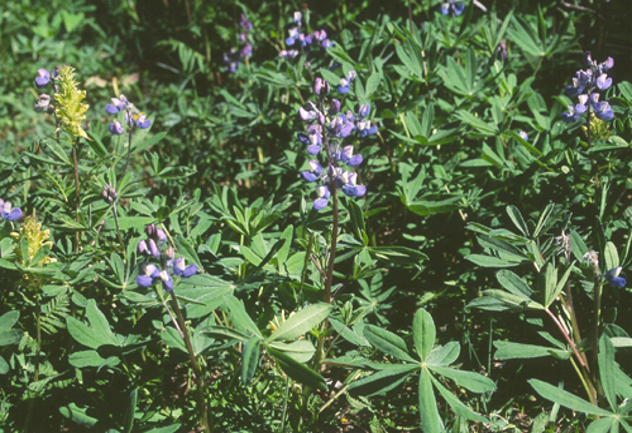GO SLOWLY; TAKE ONLY WHAT YOU NEED; THINK ABOUT THE ANIMALS, BERRIES, WATER.
Ecosystem-based planning
The starting place for Xaxli’p values is to think about our territory as the basis for our survival—our Survival Territory. Xaxli’p ancestors lived in the Fountain Valley and adjacent lands since time immemorial. They learned the rules of proper land use and of environmental, spiritual, and social behavior from this place, its waters, wildlife, and plants.
What happens to one happens to others is the guiding principle of Xaxli’p attitudes towards land use. This means that when you damage one part of the three (land, people, language), you damage all. Xaxli’p needs are not simply for resource use, but for how the resources are used. Xaxli’p needs and the needs of others must take all of this into account when deciding on uses. How we use the water, plants, animals—the land—must be culturally appropriate. For Xaxli’p, our land use is culture in action, and we do not consent to others’ using our land in a form that is in conflict with the culture and values of the people of this land.
Throughout the last century, we have been persistent in asserting our attitudes towards land use through ecosystem based planning. Ecosystem based planning is a method of land use planning that ensures the protection, maintenance, and restoration of biological diversity, at all spatial and temporal scales. Ecosystem based planning is a way of relating to and using forests that reflects Xaxli’p values. In 2001 Xaxli’p employed Silva Ecosystem Consultants to prepare the Ecosystem Based Plan for Xaxli’p Survival Territory, with extensive involvement of Xaxli’p Elders and other Xaxli’p experts. The Ecosystem Based Plan guides all land use within Xaxli’p Survival Territory.
The following is an excerpt from the Ecosystem Based Plan that describes the past and current condition of Xaxli’p ecosystems, the requirement for ecosystem restoration in Xaxli’p Territory, and the development of a diverse community economy for Xaxli’p people.
“In the words of Xaxli’p Elders, Xaxli’p Survival Territory is “an oasis in the middle of a desert.” The once plentiful water in Xaxli’p Survival Territory set it aside from much of the surrounding landscape as a place with abundant resources that sustained Xaxli’p culture for thousands of years. However, this situation has changed.
“Over the past fifty years, much of Xaxli’p Survival Territory has been logged, including highgrading in the mid and lower elevation dry Douglas-fir forests, and clearcutting of some of the headwater creeks. Coupled with fire suppression, which has excluded Xaxli’p traditional management systems, logging has resulted in significant changes to the composition, structure, and functioning of Xaxli’p forests. These changes have lead to an overall degradation of Xaxli’p forests, including a decline in water production, loss of wildlife habitat, lower timber quality, and difficulties for Xaxli’p in meeting their subsistence and cultural needs.
“More recently poorly planned and managed cattle grazing has lead to extensive degradation of sub-alpine and alpine ecosystems. This degradation has lead to the decline and loss of many Xaxli’p food and medicine plants, loss of important wildlife habitat, and introduced sources of contamination of water from creeks found within areas of cattle grazing.
“Xaxli’p Survival Territory has changed in a relatively short period of time from a rich healthy forest landscape to a damaged unhealthy forest landscape. Thus, the priority for Xaxli’p ecosystem-based management is largely about restoration of fully functioning ecosystems throughout Xaxli’p Survival Territory. This will require major efforts from Xaxli’p for the next 50 to 100 years, and beyond.
“A critical priority to achieve restoration of Xaxli’p Survival Territory is to join the Xaxli’p Traditional Use Study (TUS) and the ecosystem based plan. The Xaxli’p TUS improves restoration activities by providing both wisdom and guidance of Xaxli’p traditional management systems, and Xaxli’p cultural priorities for restoration activities.
“Associated with restoration activities will also be Xaxli’p sustainable economic development opportunities in value-added wood products manufacturing. Small logs will be a product of the restoration of overstocked Douglas fir forests throughout Xaxli’p Survival Territory, and can be used to develop value added wood products, like furniture stock and finished furniture.
“Xaxli’p sustainable economic development can also occur through the development of eco-tourism activities in Xaxli’p Survival Territory. There are several areas identified in the ecosystem based plan where there are good opportunities for eco-tourism activities.”
Process of Ecosystem Based Planning
Ecosystem based conservation planning means relating to and using the ecosystems we are part of in ways that ensure the protection, maintenance, and, where necessary, restoration of biological diversity from the genetic and species levels to the community and landscape levels. An ecosystem based conservation perspective works at all scales, from the microscopic to the global. Ecosystem based use of land and water focuses first on what to protect, and then on what to use.
Ecosystem-based conservation planning recognizes an important relationship between ecosystems, cultures and economies: economies are part of cultures, and cultures are part of ecosystems. Thus, by maintaining healthy ecosystems at all scales of time and space, the health of cultures, including their economies is also maintained. The character and limits of ecosystems are respected and protected in ecosystem-based conservation plans through culturally-based land use and the development of community-based economies.
The following diagrams (click to enlarge) have been formulated by the Silva Forest Foundation, pioneers in the development of ecosystem-based planning, to support their definition and principles for ecosystem-based conservation planning, and are published in the book “Maintaining Whole Systems on Earth’s Crown—Ecosystem-based Conservation Planning for the Boreal Forest” by Herb Hammond (2009).
The Ecosystem Based Plan for Xaxli’p Survival Territory is a landscape level plan. It describes the portions of Xaxli’p Survival Territory that need to be protected in order to provide for healthy forests, water, and wildlife; and to maintain Xaxli’p cultural activities. A protected landscape network is designed to protect forest functioning at the landscape level. This interconnected, interdependent network of ecological reserves, i.e. protected areas, has been defined using maps, air photos, and field data.
Human Use Areas are also identified for ecologically responsible activities, including ecosystem-based timber management, harvest of non-timber forest products, and ecotourism. The protected landscape network excludes industrial resource developments, but does not exclude Xaxli’p cultural activities. These activities have been part of protecting and maintaining healthy ecosystem composition, structures, and functioning for millennia. In addition to Silva’s recommendations for human use areas, Xaxli’p experts designated a large portion of Xaxli’p Survival Territory as a “Cultural Use Protected Area,” to provide the ecological foundation to meet Xaxli’p needs in the future.
A major component of the Ecosystem Based Plan for Xaxli’p Survival Territory is a set of maps that show landscape level interpretations of ecological sensitivity and suggest management options for Xaxli’p Survival Territory. The map sets were produced using geographic information systems (GIS), and used spatial data sources including British Columbia Ministry of Forests forest cover inventory, British Columbia Ministry of Environment Terrain Resource Information Management (TRIM) data, air photo-interpreted information, and information from Xaxli’p datasets.
For further information about Ecosystem Based Conservation Planning, please refer to the Silva Forest Foundation website.






